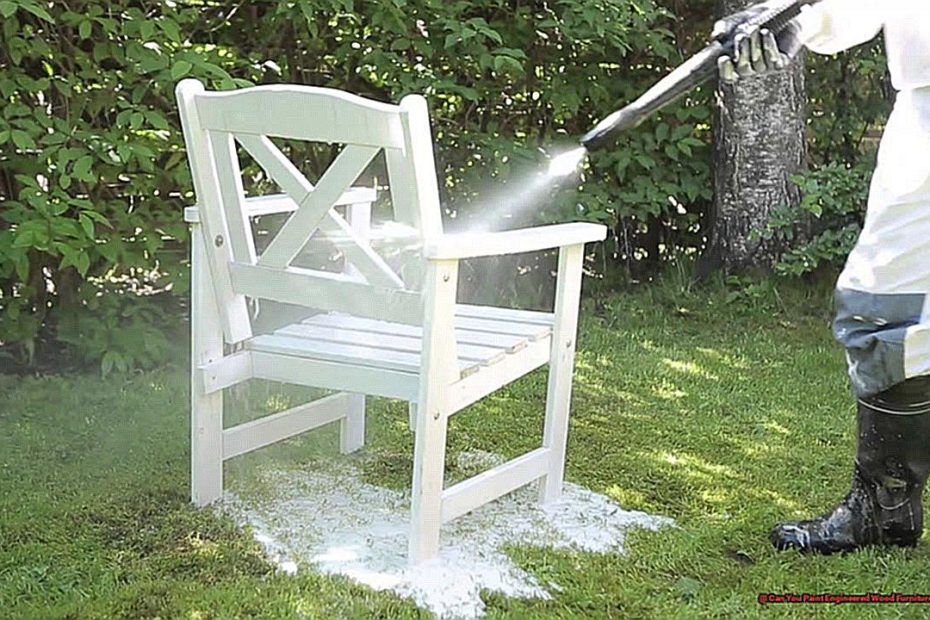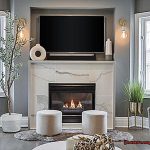Are you tired of the mundane look of your engineered wood furniture? Are you yearning to infuse it with a touch of personality and charm without breaking the bank? Look no further, because painting engineered wood furniture is the perfect solution for you. This transformative process not only allows you to revamp your furniture, but also gives you the freedom to unleash your creativity and add a personal touch to your home decor. In this blog post, we will guide you through the steps of painting engineered wood furniture, from preparation to finishing touches. Get ready to learn:
- The cost-effective and eco-friendly benefits of painting engineered wood furniture
- How to properly prepare and prime the surface for paint
- Tips on selecting the right type of paint and color for your furniture
- Step-by-step instructions on how to paint like a pro
- Finishing techniques for a polished and long-lasting result.
So grab your paintbrushes, put on some tunes, and let’s transform your old engineered wood furniture into something new and exciting.
Contents
- 1 What is Engineered Wood?
- 2 10 Easy Steps on How to Paint Engineered Wood
- 3 Additional Tips and Tricks
- 3.1 Thoroughly clean the surface of the furniture with a gentle detergent or degreaser.
- 3.2 Fill any cracks, holes, or imperfections with a wood filler and allow it to dry completely before sanding once again.
- 3.3 Use tape to mark off any areas that should not be painted.
- 3.4 Gently sand again to remove any brush or roller marks before moving on to painting.
- 4 How Can You Take Care of Painted Engineered Wood?
- 5 What Kind of Paint Can You Use?
- 6 Conclusion
What is Engineered Wood?
Engineered wood is distinct from solid wood in its composition and characteristics. It is created by bonding multiple layers of wood together using adhesives, while solid wood is made from a single piece of natural wood. This difference in construction makes engineered wood more stable and less likely to warp, making it a great choice for painting.
Moreover, engineered wood has a smooth and consistent surface, unlike solid wood which may have imperfections such as knots. This smooth surface provides an ideal base for painting, as it allows for better adhesion and a more uniform finish. However, it’s important to note that not all types of engineered wood are suitable for painting, so it’s best to consult with the manufacturer or a professional before attempting to paint over it.
When it comes to painting furniture made of engineered wood, it should be treated similarly to solid wood furniture. The surfaces should be sanded and thoroughly cleaned before priming and painting. Water-based paints are recommended for engineered wood furniture, and it’s best to apply multiple thin coats for optimal results. Adding a protective topcoat can also help seal and safeguard the painted surface.
10 Easy Steps on How to Paint Engineered Wood
- Select the appropriate paint: When it comes to painting engineered wood furniture, it is vital to choose a paint that is specifically designed for wood surfaces. It is recommended to opt for latex or acrylic-based water paints as they bond well with engineered wood and can be easily cleaned up.
- Prepare the surface: Before starting the painting process, it is crucial to properly prepare the surface of the engineered wood. This involves sanding any rough or uneven areas and wiping the surface with a damp cloth to remove dust and debris.
- Apply a primer: To ensure a smooth and even surface for the paint to adhere to, it is important to apply a primer. Use a high-quality wood primer and evenly apply it with a brush or roller. Allow it to completely dry before proceeding to the next step.
- Paint away: Once the primer has dried, you may begin painting your engineered wood furniture. Use a high-quality water-based paint and apply thin coats with a brush or roller in the direction of the grain for a flawless finish. Allow each coat to fully dry before adding another layer.
- Let it dry completely: It is crucial to allow each coat of paint to fully dry before adding more layers or handling the furniture. This will result in a seamless and even finish.
- Smooth out imperfections: After the final coat of paint has dried, lightly sand the surface using fine-grit sandpaper to eliminate any flaws or brush strokes.
- Apply more coats if necessary: If you feel that your furniture needs more coverage or a deeper color, you may add additional coats of paint. However, make sure that each coat is completely dry before applying another layer.
- Seal it with a clear coat: To safeguard your newly painted engineered wood furniture, apply a clear topcoat such as polyurethane or varnish. This will enhance its durability and give it a shiny appearance.
- Remove painters tape delicately: If you have used painters tape to protect certain areas while painting, make sure to remove it carefully once the paint has dried completely. This will prevent any unwanted peeling or damage to the paint.
- Let it cure: Finally, it is essential to allow your painted engineered wood furniture to cure for at least 24 hours before using it.
Additional Tips and Tricks
To properly prepare and prime engineered wood furniture before painting, it’s important to follow these guidelines:
Thoroughly clean the surface of the furniture with a gentle detergent or degreaser.
Gently sand the surface to eliminate any rough areas or imperfections and open up the pores of the wood.
Fill any cracks, holes, or imperfections with a wood filler and allow it to dry completely before sanding once again.
Select a primer specifically designed for use on engineered wood furniture for optimal adhesion.
Use tape to mark off any areas that should not be painted.
Apply the primer evenly using a high-quality brush or roller and let it dry completely.
Gently sand again to remove any brush or roller marks before moving on to painting.
Remember to clean, sand, fill, and prime before painting for the best results. If the furniture already has a factory-applied finish, be sure to lightly sand it to create a rough texture for the paint to adhere to. Skipping this step may result in peeling or chipping of the paint.
How Can You Take Care of Painted Engineered Wood?
- Consistently maintain cleanliness
- Avoid exposing to direct sunlight
- Promptly address any damages
- Familiarize yourself with the type of engineered wood furniture you possess
- Select the appropriate paint type
- Properly prepare the surface before painting
- Use a primer to ensure proper adhesion
- Apply thin, even layers of paint
What Kind of Paint Can You Use?
When it comes to painting engineered wood furniture, selecting the right paint is crucial for a durable and long-lasting finish. The most suitable options for this task are oil-based or latex enamel paints specifically designed for metal or laminate surfaces.
These paints are specifically formulated to withstand wear and tear, making them less susceptible to chips compared to other types of paint.
Moreover, you can also opt for either oil-based or water-based enamel paint. Both have their own unique benefits and drawbacks, so it is important to choose the one that best fits your needs. Oil-based paints offer a more resilient finish and are better at resisting stains and scratches. On the other hand, water-based paints are easier to clean and can effectively conceal imperfections.
In terms of the paint’s finish, experts recommend using either satin or semigloss. Not only are these finishes visually pleasing, but they are also easier to clean and can effectively cover up any surface flaws.
Regardless of the type of paint you choose, it is essential to properly prepare the surface before applying a primer and thin, even coats of paint. This includes thoroughly cleaning the furniture, sanding any rough areas, and using a primer specifically designed for the type of paint you will be using.
To sum it up, when painting engineered wood furniture, it is best to use oil-based or latex enamel paints made for metal or laminate surfaces, or oil-based or water-based enamel paints. Opt for a satin or semigloss finish for easier cleaning and to effectively hide any imperfections.
Conclusion
In conclusion, painting engineered wood furniture is a budget-friendly and environmentally-conscious way to revamp your ordinary pieces into extraordinary ones.
Not only does it provide an opportunity to infuse your personal touch and artistic flair into your home decor, but it also offers a durable and long-lasting finish. By following the step-by-step guide provided in this blog post, from surface preparation to final touches, you can easily transform your old furniture into something new and exciting.
With patience and attention to detail, you can achieve a polished and professional look that will elevate your furniture in any room.





